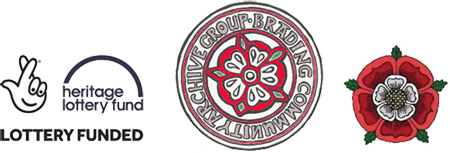A BRIEF HISTORY OF THE TOWN OF BRADING
Brading lies at the western side of the gap in the chalk ridge that runs east-west across the Island. With Brading Down behind it, to the east the town faces Brading Marshes before the chalk rises again to Culver Down. These marshes were once an extensive and important tidal haven that gave access to Brading for marine trade through what is now Bembridge Harbour.
Human activity in Brading dates back to Neolithic period (4000 BC to 2300 BC) when the chalk down land was created by woodland clearance for the first settlements. Later Bronze Age (c. 2300 BC to c.700 BC) burial mounds and trackways are located on the downs around Brading.
Iron Age (700BC to AD43) settlement has been found to the south-west of the town between the lower slopes of Brading Down and the floodplain. In the Roman period (AD 43 to AD 410) this area of settlement was formalised and developed into the Roman Villa we see today.
Brading has been identified as an estate centre with a mother church in the Anglo-Saxon (AS 410 to AD 1066) period and appears to have been a high-status settlement in the mid to Late Anglo-Saxon periods. At the time of the Domesday Survey in 1086, the manor of Berardinz was held by William, son of Azor, and his nephew held the manor from him. There were four small-holders, an acre of meadow and a small amount of woodland.
Brading town was established by Edward I after he acquired the manor of Whitefield in AD 1285. He granted the weekly Market and four-day Fair to the town, probably leading to it being known as ‘The Kynges Towne’ and starting a period of prosperity for the 13th and 14th Century town. St Mary’s Church dates to the 12th Century.
The tax records for AD 1377 show that Brading had around fifty households including two merchants, skinners, tailors, weavers, a cobbler, a smith and a butcher. Several of the households had servants. In total, there were 99 people listed in the tax register including the wives of some of the tradesmen and the servants listed.
Brading Harbour in the Middle Ages would have had several quays and landing stages, including a Quay close to the town for handling Brading’s trade. However, the Eastern Yar River and the Haven was prone to silting and would have been difficult to navigate, prompting attempts to reclaim areas of salt marsh and convert them to valuable grazing.
In 1547, Edward VI granted two fairs to the town and agreed to a change in the market day, but Brading town appears to have been in economic decline in the mid-sixteenth century in line with the general rural depopulation seen at this period.
By 1576 the tidal Haven no longer reached the Town Quay due to salt marsh reclamation, and in 1594 an embankment and seawall was constructed southeast right across the Haven from the end of Quay Lane to near Centurian’s Hill enabling reclamation upriver to Yarbridge Causeway. Brading’s Quay was now located by the seawall at the end of Quay Lane (sometime Wall Lane).
In the 16th Century Brading Town still operated as a small market town with control of local weights and measures from the surviving Old Town Hall building which partly dates to the 17th Century and is operated by the Brading Town Trust. The “Tudor House” part of the former wax museum complex dates to the 16th Century.
Brading expanded greatly in the 19th Century with many properties being built as a result of the arrival of the railway from Ryde to Shanklin which opened a station in Brading in 1864. This brought the tourists, a 1930’s guide states “Brading has of late years catered increasingly for summer visitors”.
To serve the old Quay and cement works a branch railway line was built which was extended to Bembridge in 1881 but its associated embankment finally closed off Brading Harbour.
In 1989 Brading Station complex was given Grade II listing, and following concerted effort by Brading Town Trust and Town Council the Station building was protected, opened to the public in 2005 and is now operated as a heritage centre by Brading Town Council.
Between 2001 and 2006 Brading Marshes was acquired by the RSPB as a Nature Reserve, and now covers most of the lower Yar valley from Brading down to the sea at Bembridge Harbour.
Brading heritage trail (click to view)
